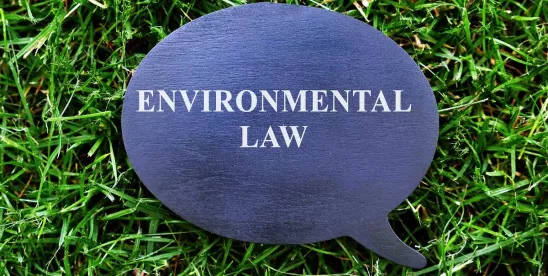Citizen Suit Basics
Citizen suits have been fundamental to environmental enforcement for decades. As we discuss in greater detail here, citizen suits begin with private parties sending “notice letters” to potential defendants, apprising them that if they do not take a specified action within a certain period of time, the private entity will initiate litigation. One important goal of these letters is to allow parties to fix issues outlined in the letters outside of litigation.
But sometimes notice letters don’t have their desired effect. Assuming the issues are not then addressed outside of litigation — typically through a specific type of settlement with state or federal regulators — the private party may file suit to address the claimed harms. Generally, parties that can demonstrate an environmental statute has been violated will seek attorneys’ fees and costs. The battle over fees and costs can be complicated (see here).
The Evolving Procedural Landscape
Over the past fifteen years, American environmental enforcement has shifted from fairly straightforward, statute-based, and command-and-control procedures, to situations where varying parties including all levels of government, companies and trade associations, and a host of non-governmental organizations (NGOs), pursue a myriad of procedures ranging from familiar to exotic to pursue often conflicting environmental priorities. (For a useful summary of the recent state-of-play, see here.)
Recent US Supreme Court precedent has the potential to alter the citizen suit landscape:
- Loper Bright and Agency Deference. Defendants caught up in citizen suits historically have used prior agency decisions — which had been deferred to under“Chevron deference” — as part of their defense strategies. These mechanisms were used to “enforce” the law but not to shape or change it — private parties were not permitted to use “plain meanings” of statutes to collaterally attack decisions by state or federal regulators. This term’s Loper Bright v. Raimondo decision may alter the balance between citizen suit plaintiff and defendants by displacing agencies of their primary role in interpreting the statutes they administer. It may become more difficult for citizen suit defendants to argue that private parties are abusing the citizen suit mechanism by collaterally attacking regulatory decisions.
- Corner Post and Regulatory Finality. Similarly, last term’s Corner Post v. Federal Board of Governors decision has the potential to reshape the regulatory landscape by limiting the concept of regulatory finality. As one court long ago put it, citizen suits exist “to enforce the law, not to change it.” Given that the Supreme Court has sanctioned reopening certain categories of regulations based on when individual parties claim injuries — even if this occurs long after a regulatory decision — it is likely that we will see citizen suits also seek to revisit long-established regulations. (Seehere for a case where the NGO plaintiffs collaterally attacked decision making under the Federal Insecticide, Fungicide, and Rodenticide Act.)
Changes to the Substance of Environmental Law
Recent dialogue about environmental issues has focused on the disconnect between current problems and the nearly 50-year-old toolkit of environmental statutes established to manage environmental issues.
Citizen suits are often pleaded in complaints containing, for instance, tort theories. This is something we’ve touched upon before here and here. Plaintiffs who may have formerly sued using statutory citizen suit provisions to remedy environmental issues are increasingly either combining citizen suit claims with other theories or solely using historically non-environmental tools to remedy environmental problems. While it is fairly straightforward to plead tort theories alleging harms to real estate in claims styled as citizen suits intended to address environmental harms, other efforts are more novel. Below are two examples:
- Environmental, social, and governance (ESG)-related cases have been filed against carbon- and climate-related industries, plastics and petrochemical companies, and businesses whose operations affect environmentally overburdened communities using ESG-related terms like “greenwashing.” While these cases have frequently been filed by private parties or governmental entities pursuing environment-related goals (such as here), similar claims can sometimes be pursued for other reasons, such as the US Securities and Exchange Commission’s recent corporate disclosure-focused charges against Keurig related to single-use coffee pods.
- Tort theories are increasingly used to target the disposal of wastes traditionally regulated under the Resource Conservation and Recovery Act. For example, litigation was filed by the California attorney general on September 23 against Exxon Mobil seeking “multiple billions of dollars” and alleges that Exxon actively encouraged the belief that plastics could be recycled and seeks establishment of an “abatement fund” to address issues related to plastic waste disposed into the environment. Similar litigation has been filed against food and beverage companies alleging that single-use packaging has resulted in contaminated drinking water and harm to wildlife and that companies need to warn consumers about risks posed by single-use packaging.
While these novel efforts may not be successful, they demonstrate that opportunistic plaintiffs seek to use tools like citizen suits, among others, to address perceived environmental issues.




 />i
/>i

